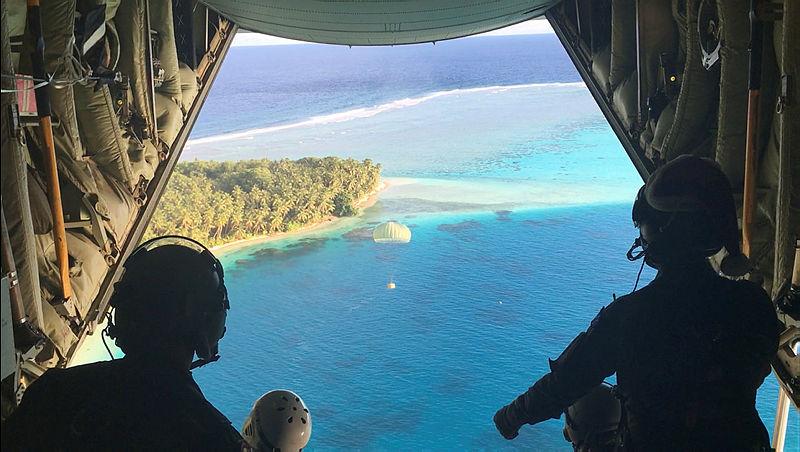
Australia today sees its strategic interests in the South Pacific directly challenged by China.
No longer is China given the benefit of the doubt as the rapidly expanding power coming to terms with its new roles in the South Pacific. The shift in Canberra’s judgement is significant.
In the previous decade, China’s actions in the South Pacific were seen principally through the prism of its diplomatic competition with Taiwan. The Beijing–Taipei fight was tough and rough in the islands, but China’s priority was clear: it was all about Taiwan. China didn’t want to disrupt the order of the South Pacific, just beat Taiwan.
By the start of this decade, China’s rapidly expanding influence was the big new economic and diplomatic reality for the South Pacific. As in Southeast Asia, China expected its prerogatives to be understood and its wishes respected.
Fair enough, thought Canberra. Australia’s relatively comfortable view was greatly aided by the diplomatic ceasefire between Beijing and Taipei, brokered by Taiwan’s president between 2008 and 2016, Ma Ying-jeou. Ma’s term muted the cheque-book battle for diplomatic recognition in the islands. That period of detente is over and intense battle has resumed.
For China, though, it’s now about more than beating Taiwan.
Australia judges that Beijing has decided it wants to remake the order in the South Pacific. See this using the frame of the third paragraph of Australia’s foreign policy white paper, discussing the changing power balance in the Indo-Pacific: ‘The United States has been the dominant power in our region throughout Australia’s post-Second World War history. Today, China is challenging America’s position.’
Rework those thoughts to get a rhyming message that reads like this: ‘Since decolonisation, Australia has been the dominant power in the South Pacific. Today, China is challenging Australia’s position.’
The change in Canberra’s perspective explains why the South Pacific was such a priority in the white paper, with the promise of economic and security ‘integration’ with the Islands and a ‘step-up’ in engagement.
In peacetime, fundamental shifts in strategic perceptions tend to be gradual and cumulative. Ad hoc moments start to form fresh patterns. The tide shifts. Understandings change. New resolves are formed. Policy adapts.
A lot of moments in different fields explain why Australia–China relations have entered an icy age. Domestically, Australia announced legislation to ban foreign political donations and broaden the definition of espionage. In cyber, Australia cited national security concerns in the decision to ban Chinese firms from any role building the 5G network. As an expression of strategic intent and economic contest, Australia trumped China to build an undersea telecommunications cable with Papua New Guinea and Solomon Islands. Australia elbowed out China, promising the islands that they’d get ‘a secure communication asset’.
To see the hardening of Canberra’s thinking over the past three years, try a simple thought experiment: Would Australia today approve China’s purchase of Darwin’s port as it did in 2015?
The ‘yes’ Australia gave in Darwin back then would become a sharp ‘no’, as Australia panics at the prospect of China controlling ports in Vanuatu or Papua New Guinea.
On Canberra’s view of Chinese power plays, The Australian’s Greg Sheridan and Cameron Stewart declare:
Australia’s intelligence and analysis agencies believe that the South Pacific now presents the greatest strategic threat to Australia, as a result of what they believe is Beijing’s intention to establish a military base in the region. This marks the first time since World War II that the South Pacific has been of such intense strategic concern to Canberra.
Australia’s view of China’s military interest in the South Pacific drives Canberra’s offer to build a joint Australia–PNG naval base on Manus Island.
As Malcolm Davis writes, Australia is acting to block a Chinese port development that’d fundamentally change Oz strategic circumstances:
The prospect of a Chinese-developed port on Manus Island, along with possible Chinese development of Wewak, Kikori and Vanimo harbours in PNG, has generated concern in Canberra. A Chinese-controlled port on Manus would give Beijing a prime strategic location for projecting military power north towards US forces in Guam or south towards Australia.
James Goldrick offers an impressive account of the long history of Manus in thinking about Oz security in the Pacific: World War I and Jellicoe, World War II and MacArthur—and especially the struggle after 1945 over whether the US Navy should be ceded control of Manus as a permanent base.
Australia, 70 years ago, wouldn’t give control of Manus to the US. Today, Canberra wants to partner with Port Moresby to deny China control of a Manus port.
The Manus effort is a statement from Australia about intent, influence and interest in the contest over the strategic order of the South Pacific.